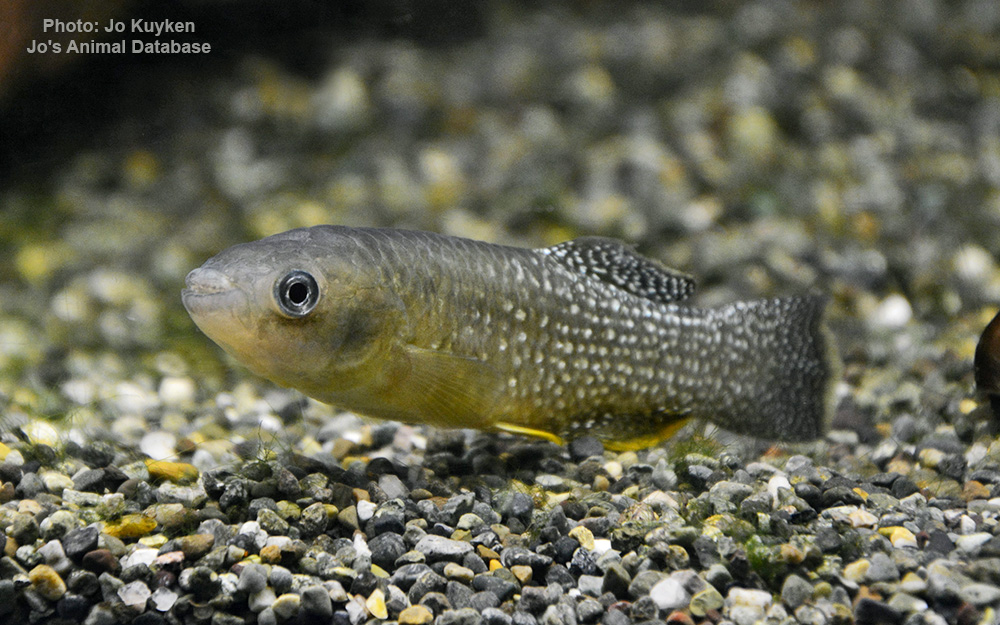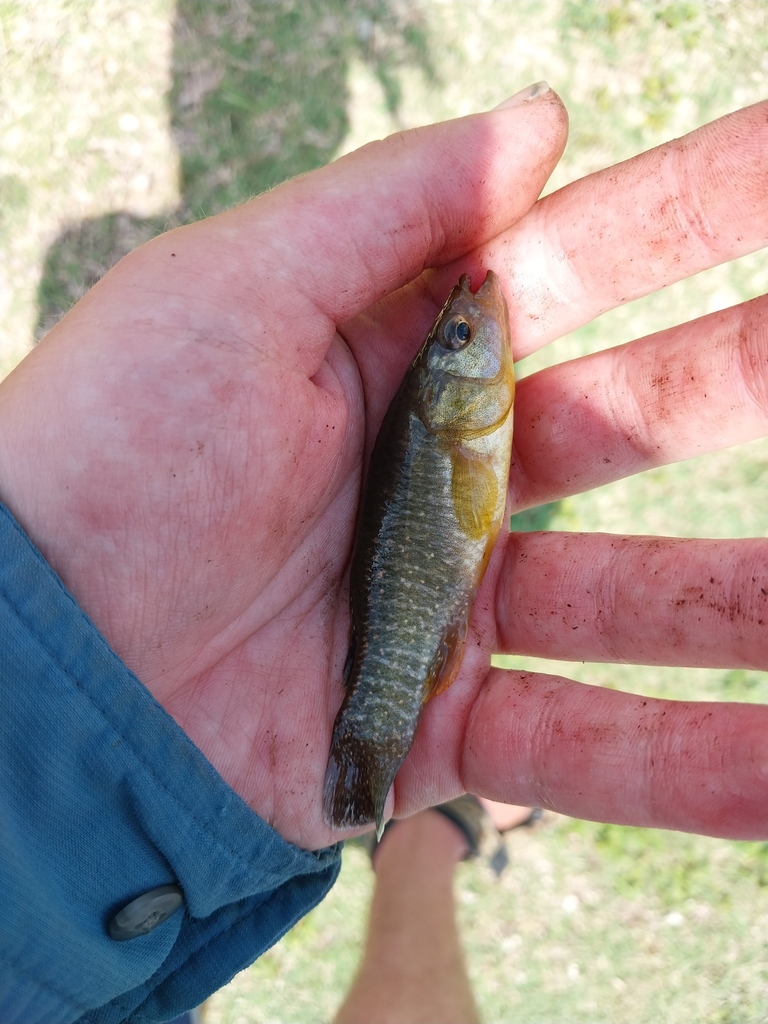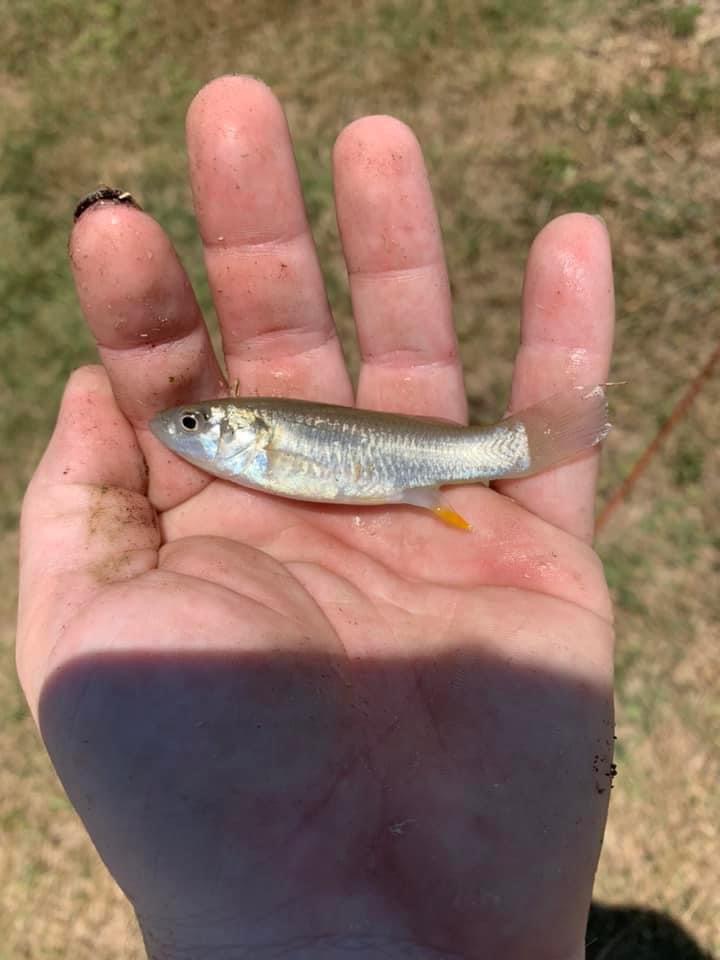Gulf killifish
(Fundulus grandis)

Image source: Jo's Animal Database
Classification
General data
The Gulf killifish (Fundulus grandis) is one of the largest members of the genus Fundulus; it is capable of growing up to 7 inches (18 cm) in length, whereas the majority of other Fundulus reach a maximum length of 4 inches (10 cm).
Therefore, F. grandis is among the largest minnows preyed upon by many sport fish, such as flounder, speckled trout (Cynoscion nebulosus), and red drum (Sciaenops ocellatus).
The Gulf killifish is native to the Gulf of Mexico from Texas to Florida and the eastern coast of Florida and the Caribbean Sea in the Atlantic Ocean. Threats to the survival of the Gulf killifish include extreme changes in salinity, changes in temperatures, and toxic events such as the hypoxic dead zone in Louisiana and the Deepwater Horizon oil spill. The Gulf killifish is currently being used to test the effects of oil and oil dispersants on the physiology of marine species affected by these substances. This is significant to conservation biology, because with the continued extraction of oil and other natural resources from North American waters, it has become increasingly important to understand the risks and consequences in worst-case scenarios, such as the Deepwater Horizon oil spill, and the lasting effects on the marine ecosystem.
Fundulus grandis has a unique coloration that separates it from other Fundulus species. First, the base color is a dull greenish above shading to lemon-yellow below. Furthermore, the differences in coloration between males show much more vivid colors with silver flecking and noticeable striping; and females, which can appear olive to dull olive below if they grow big enough. Additionally, stripes, spots, and different colors occur along the body structure. In the predorsal region are predorsal stripes, which may be present, but generally fade as the fish ages and occasionally predorsal spots. Also, small pearly spots are found along the side of the fish. The anal and lower half of the caudal region may be yellow or the anal, dorsal, and caudal regions may be darker in color with white splotches at the base. Additionally, the coloration of the male fish changes when they are breeding.
In all, these males are deep blue dorsally, and have blue median fins with light blue spots and yellow-orange margins. However, in general, the Gulf killifish is characterized by its yellowish or pale belly, and darker back with many pale spots, mottling, and inconspicuous bars.
The Gulf killifish can survive in wide ranges of habitats because it is highly adaptive. These adaptions have changed over time through evolution, which have allowed for the increased survival of the Gulf killifish. These different habitats include estuarine, lowland, upland, coastal marshes, lagoons, rivers, and streams. However, the Gulf killifish spends the majority of the time around brackish water near coasts.














